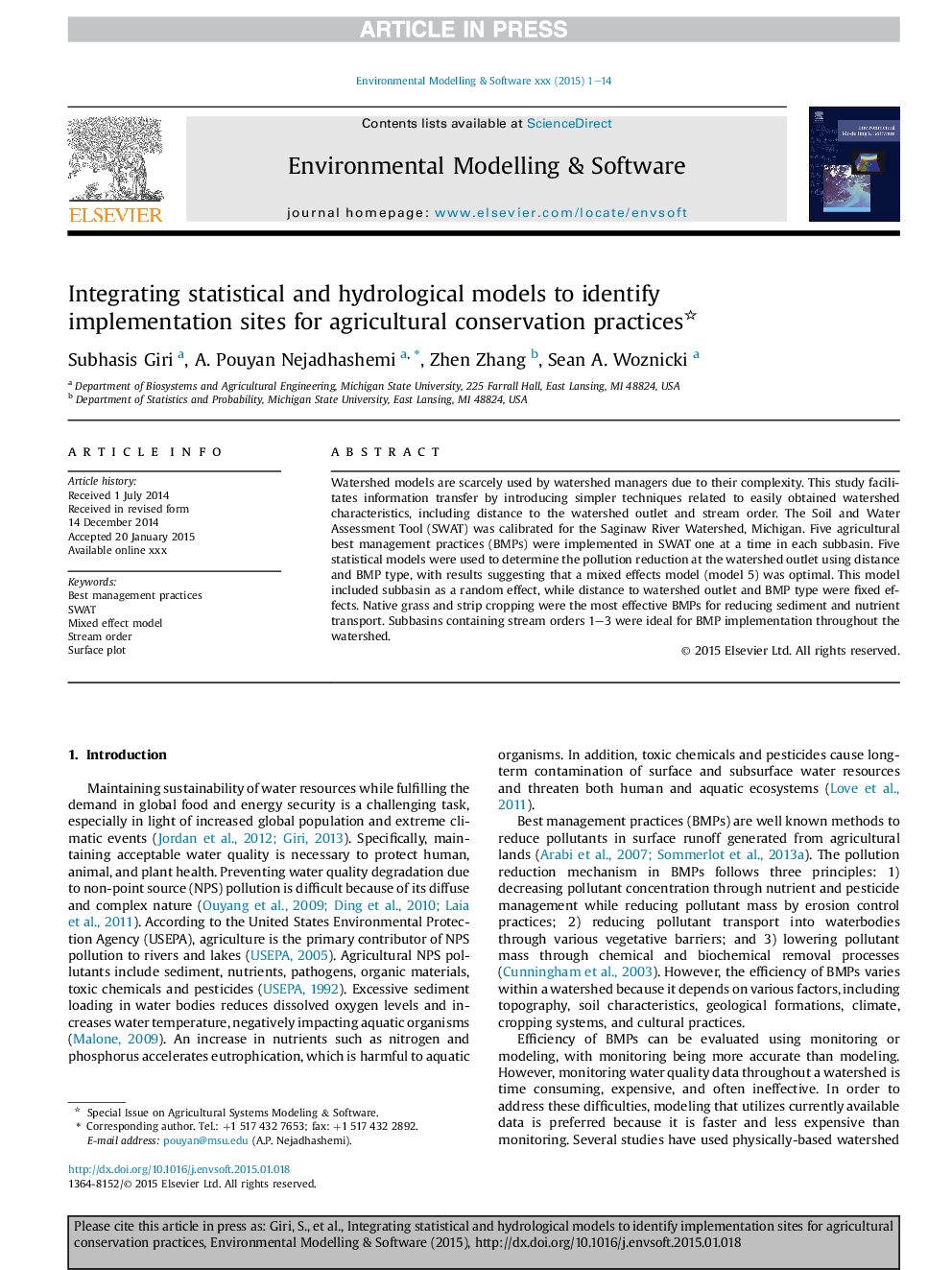| Article ID | Journal | Published Year | Pages | File Type |
|---|---|---|---|---|
| 6962990 | Environmental Modelling & Software | 2015 | 14 Pages |
Abstract
Watershed models are scarcely used by watershed managers due to their complexity. This study facilitates information transfer by introducing simpler techniques related to easily obtained watershed characteristics, including distance to the watershed outlet and stream order. The Soil and Water Assessment Tool (SWAT) was calibrated for the Saginaw River Watershed, Michigan. Five agricultural best management practices (BMPs) were implemented in SWAT one at a time in each subbasin. Five statistical models were used to determine the pollution reduction at the watershed outlet using distance and BMP type, with results suggesting that a mixed effects model (model 5) was optimal. This model included subbasin as a random effect, while distance to watershed outlet and BMP type were fixed effects. Native grass and strip cropping were the most effective BMPs for reducing sediment and nutrient transport. Subbasins containing stream orders 1-3 were ideal for BMP implementation throughout the watershed.
Related Topics
Physical Sciences and Engineering
Computer Science
Software
Authors
Subhasis Giri, A. Pouyan Nejadhashemi, Zhen Zhang, Sean A. Woznicki,
